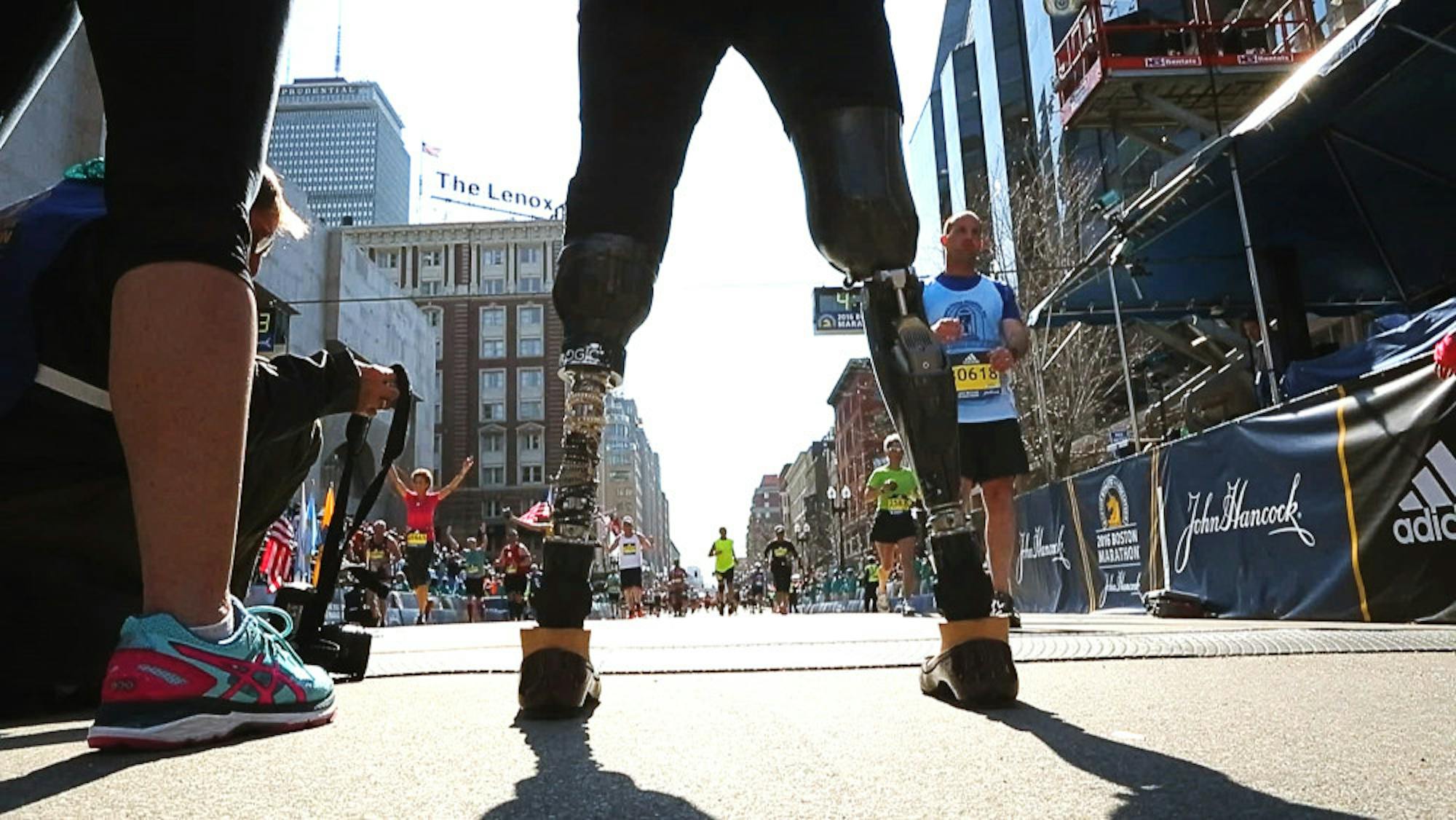While it's been a little over three years since the terror of the Boston Marathon bombing, HBO’s “Marathon: The Patriots Day Bombing” (2016), which premieres Nov. 21 at 8 p.m., attempts to recount the events that shook the nation to its core. The emotional documentary also serves as a good reminder to everyone that, while America may have moved on, the survivors have no choice but to confront this reality every day.
When directors Ricki Stern and Annie Sundberg decided that they wanted to take on this story as the subject of their next documentary, they knew it would be no easy task. Rather than risk sensationalizing the horrors of that day, they instead wanted to focus on the survivors’ well-being and how they were coming to terms with the upheaval in their lives. Stern and Sundberg knew early on that in order to do that, they had to make collaborating with The Boston Globe a priority.
While many news outlets disappeared during the aftermath of the attack and subsequent manhunt, the Globe refused to abandon their community and made a conscious decision to keep checking in for as long as their support was needed. The relationship between the Globe, the victims and Boston at large is fairly strong, making the paper the ideal stepping stone for Stern and Sundberg.
As was to be expected, the duo was met with apprehension. The Globe was steadfast in avoiding anything exploitative in nature, so it had to assess whether or not these filmmakers’ goals aligned with its own, ultimately concluding that working on this project together was a good thing. They were soon able to tap into the relationships the Globe had established with three different groups of survivors and their families. Stern and Sundberg were in it for the long haul, and the dedication and genuine care they felt toward their subjects is palpable throughout the entire film.
The film begins as every Patriot’s Day in the city does. The excitement and anticipation vibrate through the screen. It’s 2013 again. Runners and spectators alike bring out the best in each other, capturing the unwavering sense of community that was on the forefront of everyone’s mind that day. As the race begins, the film ignites an inevitable holding of the audience’s collective breath. The screen settles on a final wide frame that faces the front of the finish line head on, just as the first racers are approaching it. It’s as if time freezes once again. No matter how prepped one is, the explosion is nonetheless violently startling.
From then on, the Globe’s presence becomes more pronounced, as the story's untangling relies heavily on the coverage they gathered from that day forward. Some graphic and all-too-familiar stills appear on the screen, intercut with the footage of the second bomb going off. John Tlumacki, a photographer at the Globe, comes into frame, explaining how carefully he approached his documentation of the chaos that ensued. This was not an easy line to navigate, and Tlumacki later expresses regret in how a select few of his images veered toward being exploitative in nature in his opinion. As horrific as this sequence turned out to be, Stern and Sundberg’s choice in focusing on how the city united in the throws of the turmoil helps as the sinking devastation settles in.
The film then diverges into three unique perspectives of recovery. In one corner, newlyweds Patrick Downes and Jessica Kensky Downes deal with the disjointedness of their journey forward. Another light is cast on mother and daughter Celeste and Sydney Corcoran, the subjects of some of Tlumacki’s most haunting images of that day. Finally, brothers J.P. and Paul Norden’s rehabilitation is captured as well. Their mother, Liz Norden, is also focused on, as she struggles to extend herself to meet both of her sons' needs.
The effect of weaving these accounts together is rather profound, and all the while, Stern and Sundberg float in and out of the more difficult moments with the right amount of tact to avoid feeling intrusive. Nevertheless, these are deeply personal, intimate snapshots that these families have decided to share.
In the background of Stern and Sundberg’s commitment to humanizing the aftermath, the ongoing manhunt grips the city. Their approach captures the fact that initially, those who came together were working off little information. Yet amidst the collection of evidence, video surveillance analyses and city-wide alertness, the dots are connected.
If this time spent on the perpetrators bothers anyone, it shouldn't. One of the most poignant moments of the film occurs when Globe writer David Filipov walks this delicate line in recounting the public backlash of his piece "The Fall of the House of Tsarnaev," an in-depth profile of the brothers behind the attack. He makes the point that, in understanding these types of killers, there is a chance to prevent this type of terror attack in the future.
As a whole, Stern and Sundberg's documentary serves as an ode to light in the wake of darkness, reminding viewers of both the intensity of the bombing and resilience exhibited in the face of this tragedy.
Three years later 'Marathon: The Patriots Day Bombing' won't let viewers forget

Summary
4.5 Stars





